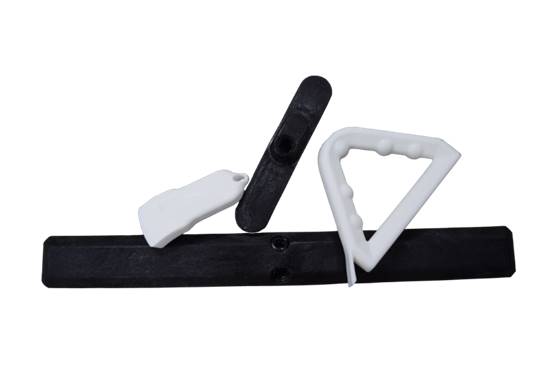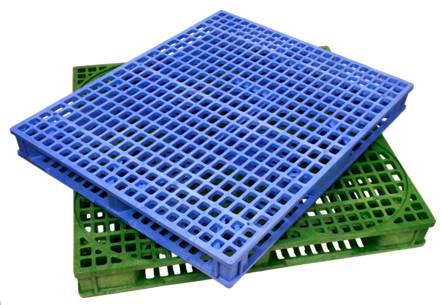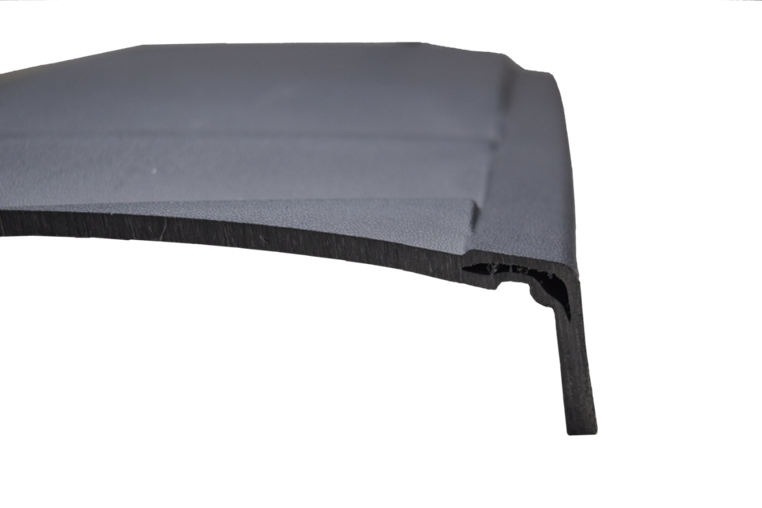Work with pioneers in structural foam molding, using both Low Pressure Multi Nozzle Structural Foam / Web and High Pressure Injection Foam.
Structural Foam molding can be processed using commodity resins as well as engineered grade resins. The process requires an inert gas (nitrogen) or a pelletized chemical blowing agent. The process is to mix the inert gas / blowing agent with the specific resin of choice inside the barrel or extruder.
The resin is then injected into the mold. Injection pressures are much lower than straight injection molding, as the mold front fills the cavity of the mold the gas expands and packs out the cavity. As the mold front fills the cavity it creates a hard surface against the walls of the mold. The center section of the nominal wall is where the cell structure / foam occurs. Typical wall sections for Structural Foam range from .180” to .250”. Thicker wall sections are common but will control cycle times. Typical weight reductions will range from 8 to 15 percent.
There are tooling advantages to the Low Pressure Structural Foam process. With the injection pressures being significantly lower than the standard injection process, tooling can be constructed out of aluminum instead of steel. Choosing the right tool material is dependent on the types of resin selected and the accumulated volumes expected for the tool life. A steel tool may be required if the resin of choice is a glass filled material or an aggressive abrasive material.
SINGLE NOZZLE STRUCTURAL FOAM (INJECTION FOAM)
Single Nozzle Structural Foam molding utilizes a chemical blowing agent to create the cellular structure within the wall section. This process is used where proper filling can be achieved through one injection point. Single Nozzle Structural Foam is used on many medium to medium / large heavy wall sectioned parts, in both commodity and engineering grade resins. This process yields part weight reduction, sink elimination, and lower molded-in stress.
MULTI-NOZZLE STRUCTURAL FOAM
If your project requires a part that proper filling cannot be achieved through one injection point, we offer Multi-Nozzle Structural Foam molding. This process injects nitrogen gas with your chosen resin under pressure during the melting process. The material is then injected into the mold through multiple injection sites. The gas is allowed to expand to fill the cavity, forming a lower density, highly rigid, thick-walled part that is lighter than can be achieved with standard injection molding. This process yields part weight reduction, sink elimination, and lower molded-in stress.
GAS COUNTER PRESSURE MOLDING
Gas Counter Pressure Molding is a supplemental process to Single Nozzle Structural Foam molding for enhanced part surface finish. Gas Counter Pressure requires the tool to be charged under pressure. When the material enters a pressurized cavity, it produces a part with an improved resin-rich surface. Gas Counter Pressure is somewhat limited to parts with flat parting lines due to the gaskets required to pressurize the mold. Key benefits include; greatly improved surface finish over Single Nozzle Structural Foam, part weight reduction, sink elimination, and lower molded-in stress.








